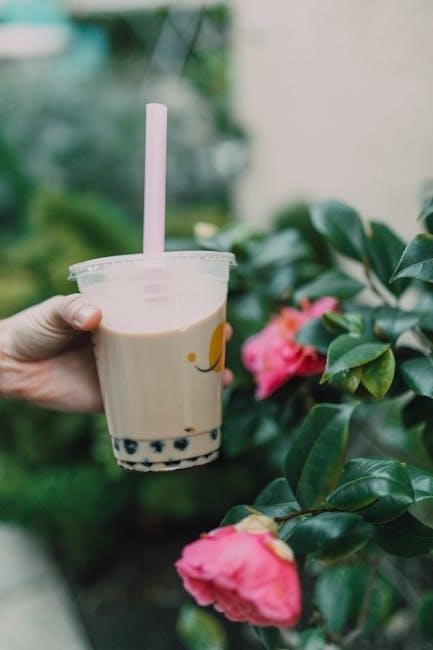
boba carrier instructions
Boba Carrier Instructions: A Comprehensive Guide
Welcome to your ultimate resource for mastering the Boba carrier! This comprehensive guide provides detailed instructions, tips, and tricks for safely and comfortably using your Boba carrier.
Boba carriers offer a convenient and comfortable way to keep your baby close while keeping your hands free. Designed with both parent and baby in mind, Boba carriers come in various styles, including wraps, soft structured carriers, and hybrids, catering to different preferences and needs. Whether you’re a new parent or an experienced caregiver, understanding the features and proper usage of your Boba carrier is crucial for ensuring a safe and enjoyable babywearing experience.
This guide will walk you through the different types of Boba carriers available, providing step-by-step instructions on how to use each one effectively. We’ll cover everything from tying a Boba Wrap to adjusting the Boba X for different ages and sizes. Additionally, we’ll delve into essential safety guidelines, weight limits, and cleaning instructions to help you maintain your carrier and protect your little one. Get ready to embark on a wonderful journey of babywearing with your Boba carrier!

Understanding Boba Carrier Types
Boba offers a diverse range of carriers designed to suit various needs. Let’s explore the different types, highlighting their unique features and benefits for both parent and child.
Boba Classic/4GS Carrier Instructions
The Boba Classic, also known as the 4GS, is a soft structured carrier designed for simplicity and comfort. This section provides comprehensive instructions for using your Boba Classic/4GS carrier, ensuring a safe and enjoyable babywearing experience. Before you begin, familiarize yourself with all the parts of the carrier, including the shoulder straps, waist belt, buckles, and adjustments. This carrier is suitable for babies from 7 to 45 pounds, offering both front and back carry options as the child grows.
Ensure the waist belt is securely fastened and adjusted for a snug fit around your waist. The shoulder straps should be tightened evenly to distribute the weight comfortably across your shoulders. Always check that all buckles are securely fastened before placing your baby in the carrier. Proper positioning is crucial for your baby’s comfort and safety; ensure their hips are in an “M” position.
Front Carry Instructions for Boba 4GS
The front carry position is ideal for newborns and younger babies, allowing you to keep them close and easily monitor their well-being. To begin, fasten the waist belt securely around your waist, ensuring it sits comfortably. Next, position the carrier on your front, bringing the shoulder straps over your shoulders. Ensure they aren’t twisted. Hold your baby securely against your chest, supporting their bottom.
Bring the carrier panel up and over your baby’s back, making sure their legs are in a natural “M” position. Fasten the chest clip, adjusting it to a comfortable height. Tighten the shoulder straps evenly, ensuring a snug and secure fit. Your baby’s head should be close enough to kiss. For newborns, use the infant insert for proper support. Always monitor your baby’s breathing.
Using the Sleeping Hood on Boba 4GS
The integrated sleeping hood on the Boba 4GS offers valuable support for your baby’s head and neck, particularly during naps or when you need to shield them from the sun or wind. To use the hood, locate the snaps near the shoulder straps. Gently unsnap the hood from its storage position. Reach behind your baby’s head and attach the hood straps to the corresponding snaps on the shoulder straps.
Adjust the hood’s tightness by adjusting the straps, ensuring it provides gentle support without being too restrictive. When the hood is not in use, simply roll it up and secure it with the snaps to keep it neatly tucked away. Regularly check the hood’s position to ensure your baby’s comfort. The sleeping hood is a great feature for all situations.
Boba Wrap Instructions
The Boba Wrap, known for its soft, stretchy fabric and ease of use, is a wonderful choice for newborns and infants. Its intuitive design allows for a close and secure carry, promoting bonding and comfort for both parent and baby. Mastering the Boba Wrap involves a few simple steps. First, find the middle of the wrap. Then, position it against your body.
Ensure the fabric is evenly distributed across your back and shoulders. Next, cross the wrap in front of you, creating a secure pouch for your baby. With practice, the Boba Wrap becomes second nature, providing a convenient and comfortable way to keep your little one close while going about your day. Enjoy the magical babywearing experience!
How to Tie a Boba Wrap (Classic and Serenity)
Tying the Boba Wrap, whether it’s the Classic or Serenity model, involves a few key steps to ensure a secure and comfortable carry for your baby. Start by finding the middle of the wrap, indicated by a tag. Hold the middle point against your stomach, then bring the ends around your back, crossing them high between your shoulder blades. Bring the ends forward over your shoulders.
Next, create a horizontal band across your chest and pull the ends underneath this band. Cross the ends in front of you, then tie them securely behind your back. Ensure the fabric is smooth and snug against your body; This method works for both the Boba Classic and Serenity wraps, providing a safe and ergonomic hold for your baby.
Boba Wrap Positioning for Newborns
Positioning a newborn correctly in the Boba Wrap is crucial for their safety and comfort. Ensure the wrap is snug and supportive, holding the baby high on your chest, close enough to kiss. The baby’s legs should be in a “froggy” or “M” position, with their knees higher than their bottom, promoting healthy hip development.
The fabric should support the baby from knee pit to knee pit, evenly distributing their weight. Make sure the wrap comes up to the back of the baby’s neck for proper head support. Always monitor the baby’s breathing and ensure their face is visible and not pressed against the fabric. Adjust the wrap as needed to maintain optimal positioning and comfort for both you and your newborn.
Boba X Carrier Instructions
The Boba X carrier is designed for babies from 7 to 45 lbs, eliminating the need for an infant insert. To begin, adjust the seat width to fit your baby’s size, ensuring their legs are in a comfortable “M” position. Fasten the waistband snugly around your waist, positioning it higher for newborns and lower as your baby grows.
Next, place your baby against your chest and bring the carrier panel up, securing the shoulder straps. Adjust the chest strap for a comfortable and secure fit. Ensure your baby’s face is always visible and not obstructed by the carrier. Regularly check the fit as your baby grows, adjusting the seat and straps as needed to maintain optimal support and comfort.
Adjusting the Boba X for Different Ages/Sizes
The Boba X carrier’s adjustability is key to its versatility. For newborns, narrow the seat width to ensure proper hip support and an “M” position for the legs. As your baby grows, gradually widen the seat to accommodate their increasing size. The panel height can also be adjusted to provide adequate back support as they get taller.
When adjusting for older babies, ensure the carrier still supports them from knee-to-knee. The shoulder straps should be tightened or loosened to maintain a snug and comfortable fit. Regularly check that your baby’s airway is clear and their face is visible. Always prioritize your baby’s comfort and safety when making adjustments to the Boba X carrier.

Boba Bliss Carrier Instructions
The Boba Bliss carrier offers a blend of simplicity and comfort, designed for newborns and infants. Start by ensuring the waistband sits snugly at your natural waist. Position your baby facing you, ensuring their legs are in a natural “M” shape, supported from knee to knee.
The shoulder straps should be adjusted to distribute your baby’s weight evenly across your back and shoulders. Ensure the carrier panel supports your baby’s back and neck adequately, especially for newborns. Always check that your baby’s airway is clear and their face is visible. With its intuitive design, the Boba Bliss makes babywearing a joyful experience.

Safety Guidelines for Boba Carriers
Prioritize your baby’s safety with Boba carriers. Always adhere to weight limits. Ensure proper positioning for healthy hip development and unobstructed airways. Regularly inspect the carrier for wear and tear.
Weight Limits and Age Recommendations
Understanding the weight limits and age recommendations for each Boba carrier is crucial for your baby’s safety and comfort. The Boba Wrap is generally suitable for newborns and infants, typically from 7 to 35 pounds, providing a snug and secure hold. The Boba 4GS carrier accommodates babies from 7 to 45 pounds, offering versatility as your child grows.
The Boba X carrier, designed for babies from 7 to 45 pounds, eliminates the need for an infant insert, simplifying the transition from newborn to toddler. Always consult the specific instructions included with your Boba carrier for precise weight limits and age guidelines. Exceeding the recommended weight or using the carrier inappropriately can pose risks to your baby’s safety and comfort.
Pay close attention to your baby’s developmental milestones and adjust the carrier settings accordingly to ensure optimal support and ergonomics. By following these guidelines, you can confidently enjoy the benefits of babywearing while prioritizing your child’s well-being.
Proper Positioning for Baby’s Safety
Ensuring proper positioning is paramount for your baby’s safety and comfort while using a Boba carrier. Always ensure your baby is positioned in an upright, ergonomic “M” shape, with their knees higher than their bottom. This position supports healthy hip development and prevents strain on their spine.
The carrier should snugly support your baby’s back, mimicking the natural curvature of their spine. Avoid positions where your baby’s chin is pressed against their chest, as this can restrict breathing. Regularly check your baby’s airway to ensure clear and unobstructed breathing.
When using a front carry position, make sure you can always see your baby’s face by tilting their head or adjusting the carrier. For newborns, use the appropriate infant insert or positioning to provide adequate head and neck support. As your baby grows, adjust the carrier to maintain the correct “M” position and spinal support. By adhering to these guidelines, you can ensure a safe and comfortable babywearing experience.

Care and Maintenance
Proper care and maintenance of your Boba carrier will extend its life and ensure its continued safety. Follow our cleaning instructions to keep your carrier in top condition.
Cleaning Instructions for Boba Carriers
Keeping your Boba carrier clean is essential for hygiene and longevity. Spot cleaning is recommended for minor stains. Use a mild detergent and gently rub the affected area with a soft cloth. Air dry the carrier away from direct sunlight or heat to prevent fading or damage to the fabric. For more thorough cleaning, some Boba carriers are machine washable. Always check the care label on your specific carrier model for detailed washing instructions. Use a gentle cycle and cold water to avoid shrinking or warping the carrier. Avoid using bleach or harsh chemicals, as they can weaken the fabric and irritate your baby’s skin.
It’s also important to ensure that all buckles and straps are securely fastened before washing to prevent them from getting tangled or damaged. After washing, reshape the carrier and lay it flat to dry. Do not put the carrier in the dryer, as the high heat can damage the elastic and other components. Regular cleaning will help maintain the appearance and functionality of your Boba carrier, ensuring a safe and comfortable experience for you and your baby. With proper care, your Boba carrier will remain a reliable and cherished babywearing tool for years to come.